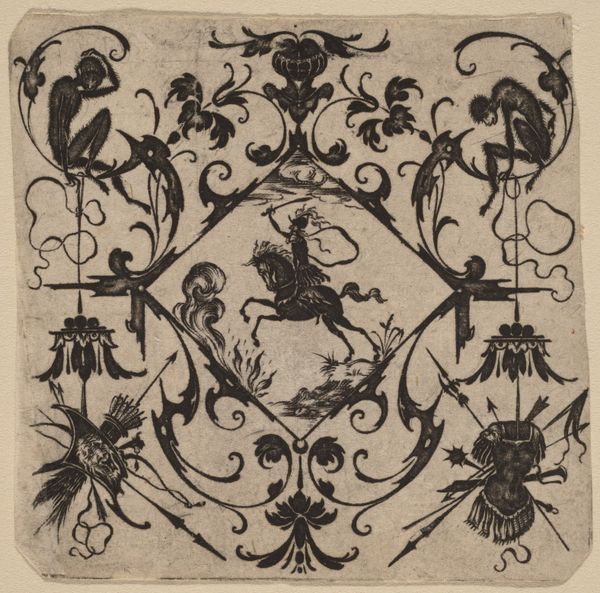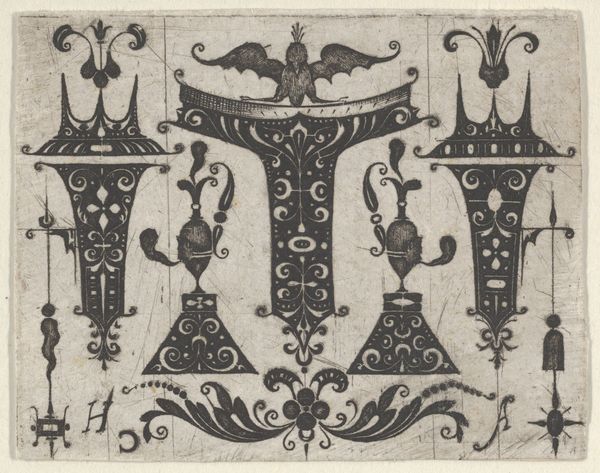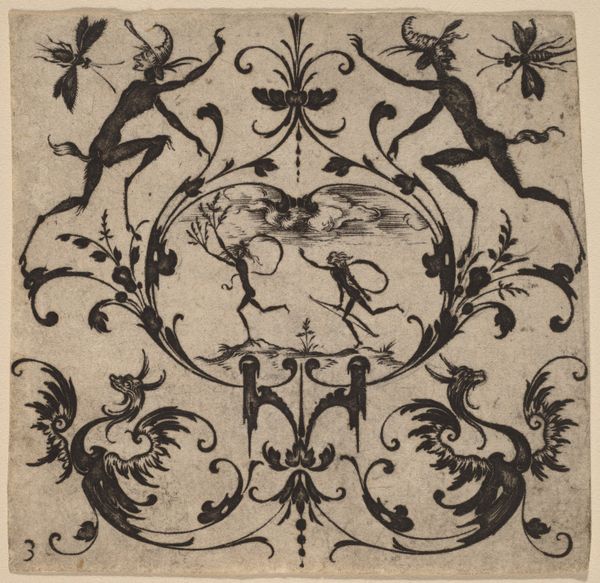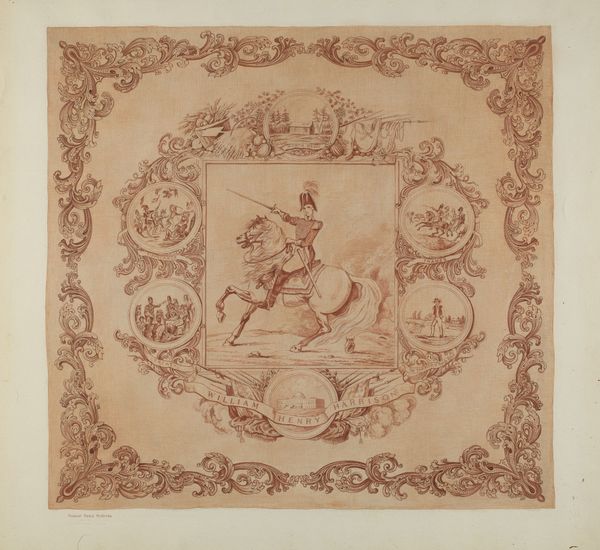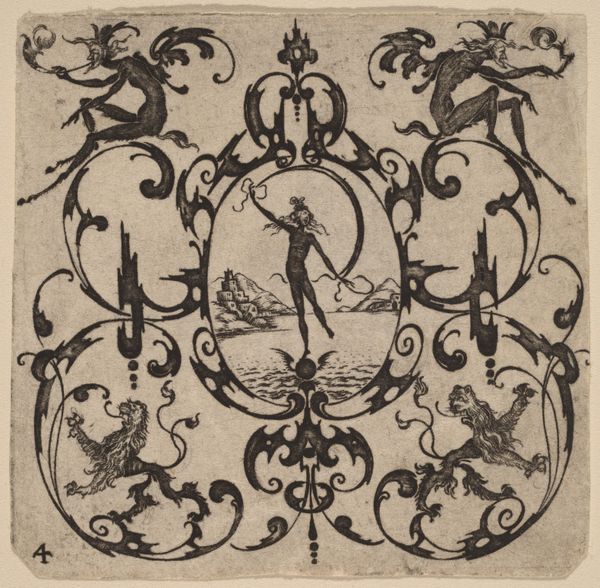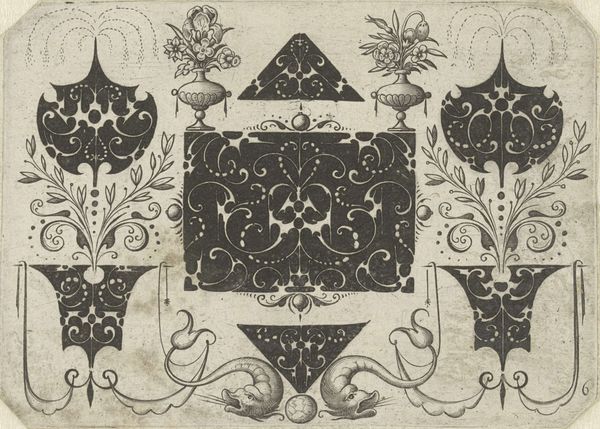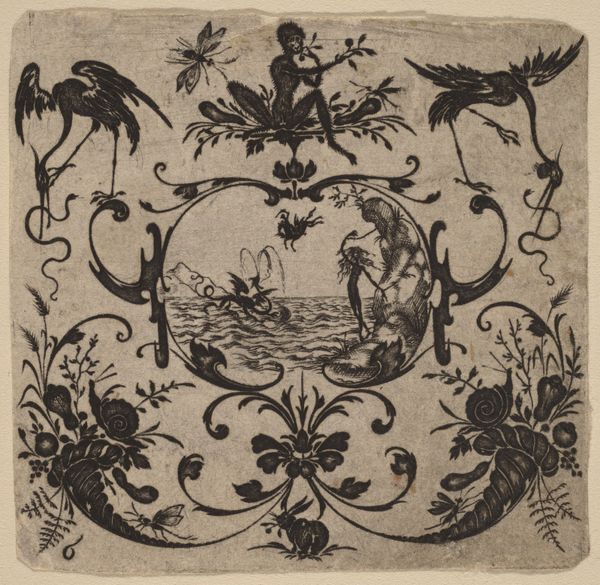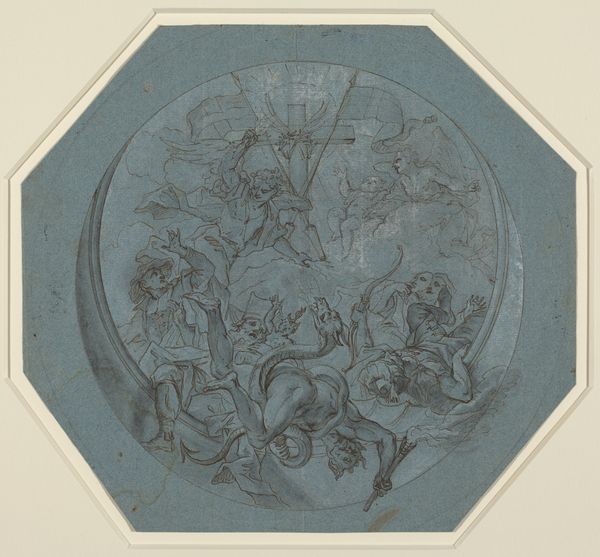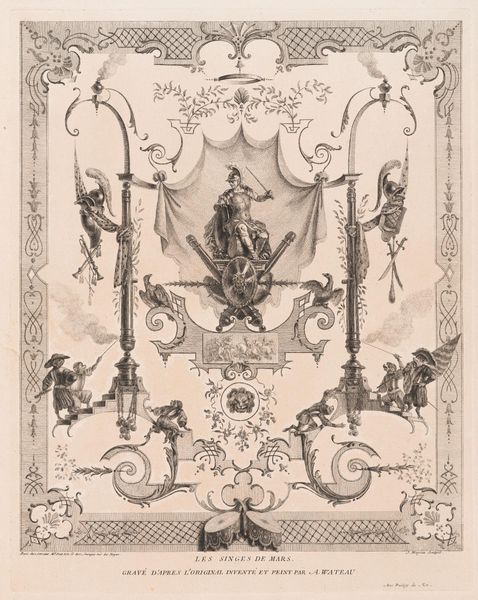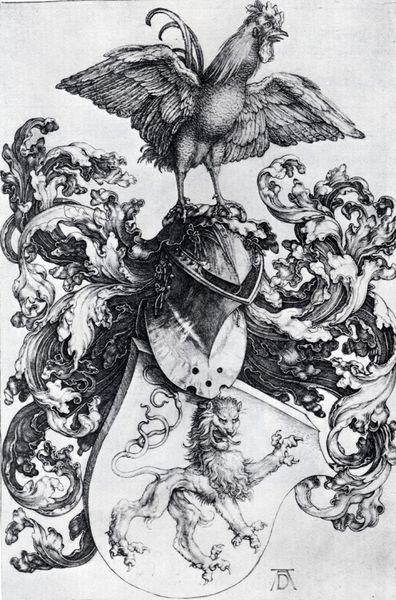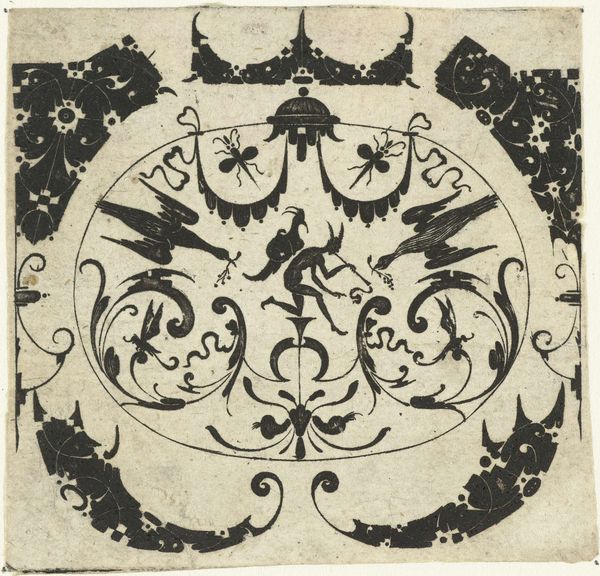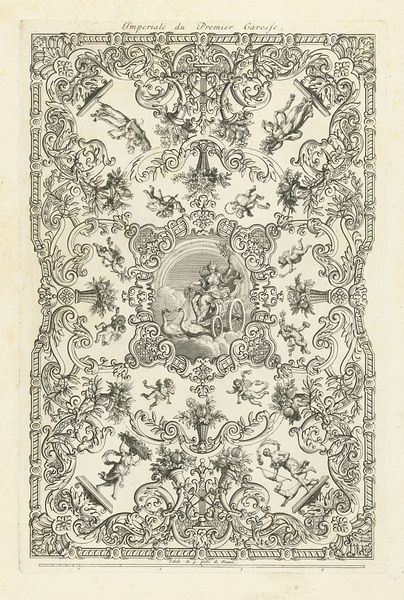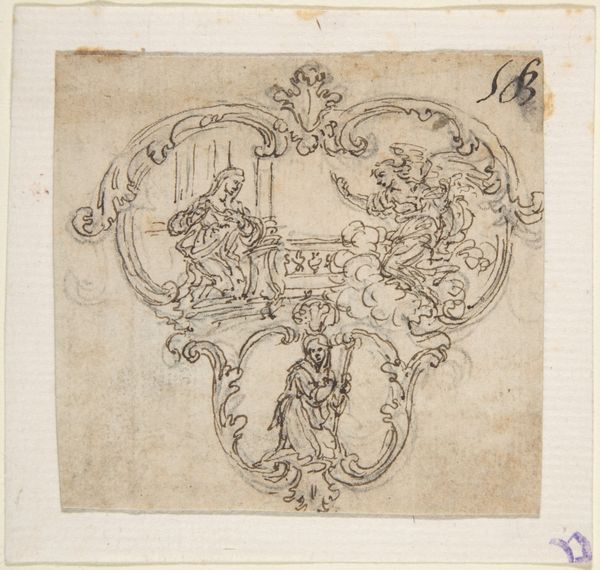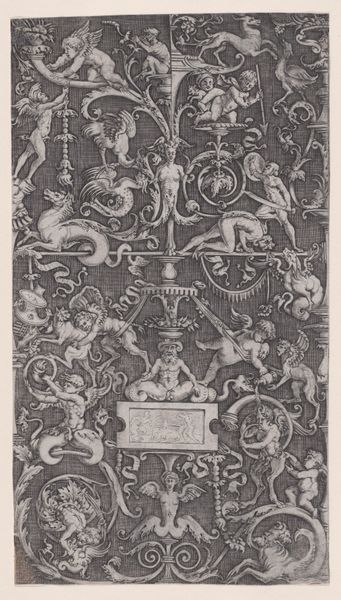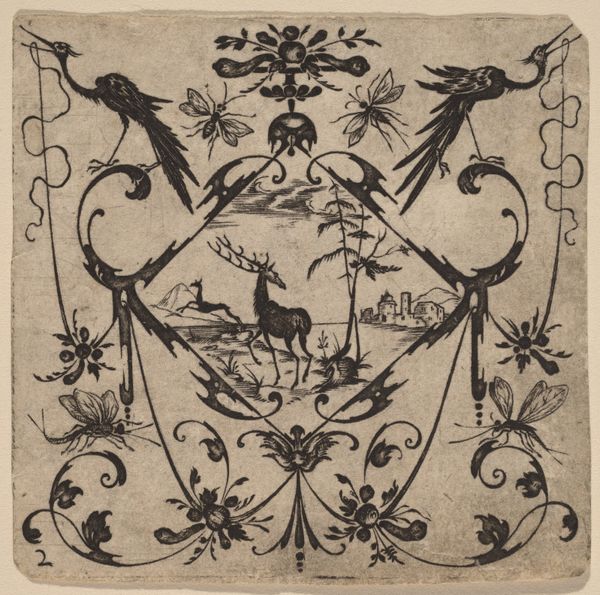
Tile with a bust of William III (1650–1702) 1689 - 1699
0:00
0:00
ceramic, sculpture
#
portrait
#
allegory
#
baroque
#
ceramic
#
sculpture
#
history-painting
#
decorative-art
Dimensions: Overall: 27 1/4 × 27 1/4 in. (69.2 × 69.2 cm)
Copyright: Public Domain
This tin-glazed earthenware tile depicting William III was created by Adrianus Kocx in the late 17th century and is currently held at the Metropolitan Museum of Art. The tile presents a visually striking image dominated by its blue and white contrast. This monochromatic scheme emphasizes form and the detailed execution of ornamental motifs. The composition is carefully structured, featuring a symmetrical arrangement of cherubs, floral patterns, and drapery around a central cartouche and bust. This symmetry is a visual cue, reinforcing ideas of order and hierarchy, reflecting the values of the ruling class. The tile’s surface is divided into distinct, yet interconnected zones. Note how these zones create a sense of depth and perspective within the two-dimensional plane. Overall, the tile functions not merely as decoration but as a complex system of signs, communicating power and prestige. Its interpretation remains open, depending on the viewer's cultural and historical vantage point.
Comments
No comments
Be the first to comment and join the conversation on the ultimate creative platform.
